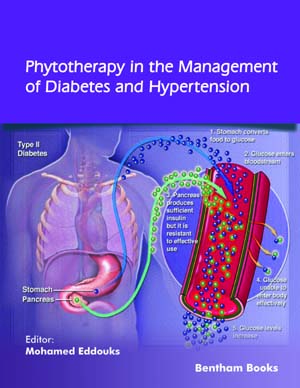Abstract
Medicinal plants have long been the area of great interest and a hot topic of current scientific investigations for the biochemists, chemists and pharmaceutics. These researches play an important role in discovering the new natural resources and developing the potential drugs for the treatment of various unknown diseases. These drugs are supposed to have more effectiveness and no side effects unlike most other synthetically produced modern drugs. In accordance with the World Health Organization (WHO), approximately four billion people constituting eight percent population of the world, use herbal based natural drugs for the majority of primary health care problems. Diabetes mellitus and hypertension are the two most common diseases that sometimes also coexist and enhance the chances of neuropathic disorders, brain strokes, retinopathic symptoms, peripheral vascular diseases and cardiac arrest. This chapter describes various medicinal plants having anti-diabetic and antihypertensive potentials along with their detailed mechanisms and mode of actions. Some potential anti-diabetic plants are alkanet, asthma weed, bamboo, basil, caraway, chirayita, coleus, cubeb, cumin, cypress, damask rose, fennel, fenugreek, fig, frangipani, ginseng, guava, henna, Indian globe thistle, Indian pennywort, ma-huang, moringa, olive, puncture vine, saffron, sweet lemon, tree turmeric, walnut, corn and tawa tawa. Anti-hypertensive plants discussed in this chapter include basil, black piper, coleus, curry leaf, puncture vine, sesame seed, yarrow, passion fruit, onion, garlic, celery, oat, barberry, black cumin, ylang ylang, garden cress, ginger and sweet lemon.
Keywords: Anti-diabetic, Anti-hypertensive, Brain Stroke, Cardiac Arrest, Essential oils, Medicinal Plants.






















